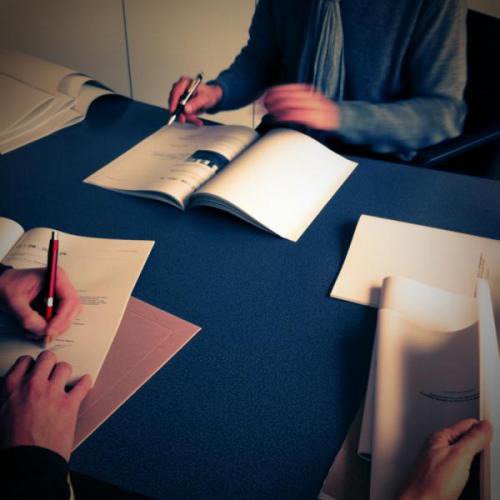Found in Translation chapter L
dal 29/9/2011 al 7/1/2012
Segnalato da
Lara Almarcegui
Juan Arata
Wojciech Bakowski
Pierre Bismuth
Aline Bouvy
John Gillis
Lucia Bru
Liudvikas Buklys
B-1010
be-DIX_TIEN
Francisco Camacho
Ludovic Chemarin
Koenraad Dedobbeleer
Edith Dekyndt
Simona Denicolai
Ivo Provoost
Agnes Geoffray
gerlach en koop
Jos de Gruyter
Harald Thys
Sofie Haesaerts
Saskia Holmkvist
Hedwig Houben
Ann Veronica Janssens
Eleni Kamma
Ermias Kifleyesus
Gabriel Kuri
Adrien Gary Lucca
Jani Ruscica
Robert Suermondt
Simon Starling
Pieter Vermeersch
VVORK
Freek Wambacq
Emmanuel Lambion
29/9/2011
Found in Translation chapter L
Casino Luxembourg, Luxembourg
A group exhibition by 29 artists, presents works being - directly or indirectly - in connection with each other. Certainly, loss of meaning may be induced through linguistic translations of sentences or expressions (lost in translation); but this show also aims at 'gathering' works of art in order to create, among others, new conceptual and formal interpretations. In turn, the techniques, disciplines, institutional context, media, supports, codes and language.

Curator: Emmanuel Lambion
Artists: Lara Almarcegui, Juan Arata, Wojciech Bakowski, Pierre Bismuth, Aline Bouvy & John Gillis, Lucia Bru, Liudvikas Buklys, B-1010, be-DIX_TIEN, Francisco Camacho, Ludovic Chemarin ©, Koenraad Dedobbeleer, Edith Dekyndt, Simona Denicolai & Ivo Provoost, Agnès Geoffray, gerlach en koop, Jos de Gruyter & Harald Thys, Sofie Haesaerts, Saskia Holmkvist, Hedwig Houben, Ann Veronica Janssens, Eleni Kamma, Ermias Kifleyesus, Gabriel Kuri, Adrien Gary Lucca, Jani Ruscica, Robert Suermondt, Simon Starling, Pieter Vermeersch, VVORK, Freek Wambacq
The title of the exhibition, an antonymous quotation of a well-known English idiom (“lost in translation”), plays on the
ambivalence and polysemy of words in English. This can, in fact, be translated into French as “traduction” or “translation”.
The common denominator of these two “interpretations” lies in the etymological approach of the term “translation” itself,
whose Latin origins refer to the action of carrying/taking something, somebody or oneself out of its normal context (from
transfero, translatum).
Thus, the concept of translation here, goes beyond any restrictive semantic use, to be apprehended in a wider, metapho-
rical meaning, like the subtle deliberate shifting of a being, a sign, a practice, a discipline or an area of knowledge, opened
up to new perspectives of investigation, research, transmission and perception. Through this simple deviation from one
perspective or from one given context to another, an implicit and subtle phenomenon of sending something back to the
drawing board generally takes effect, of questioning norms, codes, languages, and accepted practices.
A phenomenon which, in our meaning, understands current art practices and research and characterises them well.
Beyond any generational approach, we find ourselves in an age where the meaning often coils up into the interstice.
Everything occurs as though the artist were creating and instilling the meaning of their work in the subtle and critical area
freed by a sort of “translation” the quotation, reversed, whether changed or not, the reappropriation or a simple shift in
meaning of one of the work’s parameters, as much at the level of the creative process as at that of how it is presented,
communicated or even received.
Therefore, far from being restricted to a simply “linguistic” approach to the term, the exhibition unfurls through an
expansion of the axes of the concept’s interpretation: in turn, the techniques, disciplines, institutional context, media,
supports, codes and language find themselves, directly or in a more mediatised way, questioned by the works of the guest
artists.
Found in Translation, Chapter L is the third part of curator Emmanuel Lambion’s exhibition series initiated in January 2010.
Each chapter, identified by an index letter selected associatively rather than alphabetically, becomes part of a cycle which
links specific declensions to different contexts, places and formats around this polymorphic subject.
The exhibition is realised with the support of Mondriaan Stichting and Fédération Wallonie-Bruxelles.
Image: P. Nicolas Ledoux and Damien Beguet
Communication / Press:
Nadine Clemens nadine.clemens@casino-luxembourg.lu
Opening: Friday 30 September, 7 - 9 p.m.
Casino Luxembourg – Forum d'art contemporain
41, rue Notre-Dame | B.P. 345 | L-2013 Luxembourg
Opening Hours:
Monday, Wednesday, Friday from 11 a.m. to 7 p.m.
Thursday from 11 a.m. to 8 p.m.
Saturday, Sunday and public holidays from 11 a.m. to 6 p.m.
Tuesday closed
Admission:
Adults: 4 €
Reduced: 3 € for young people < 26 years, 60+, groups (max. 20 pers.)
Free entrance: Children and teenagers < 18 years
Free entrance every Thursday from 6 p.m. to 8 p.m.



